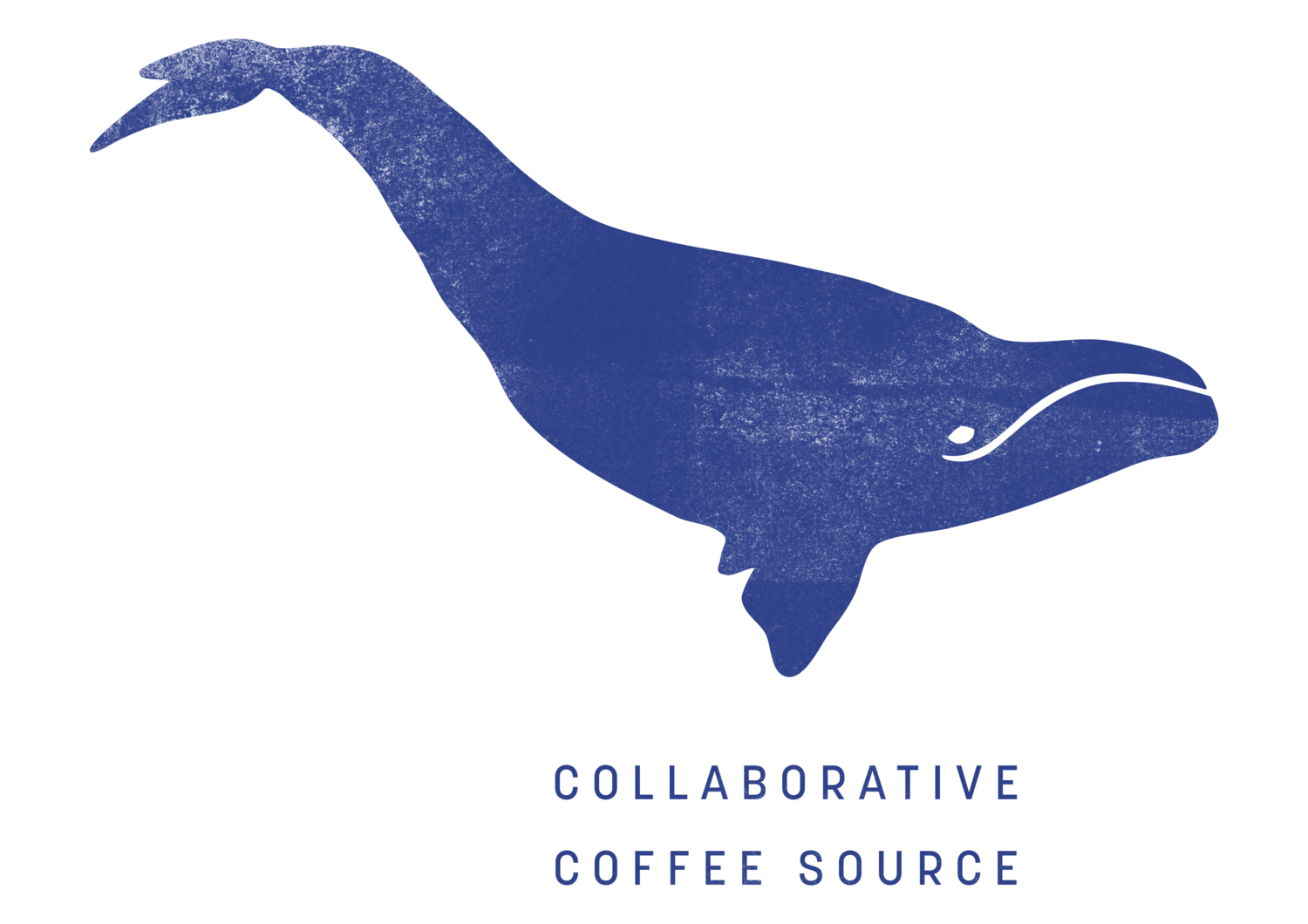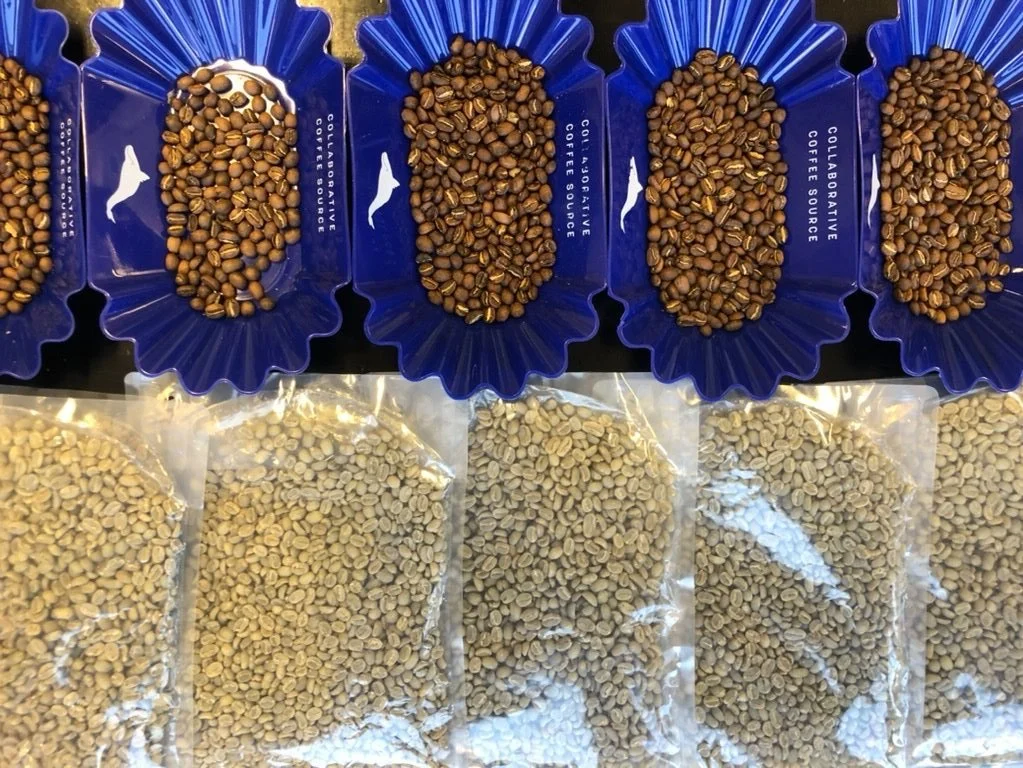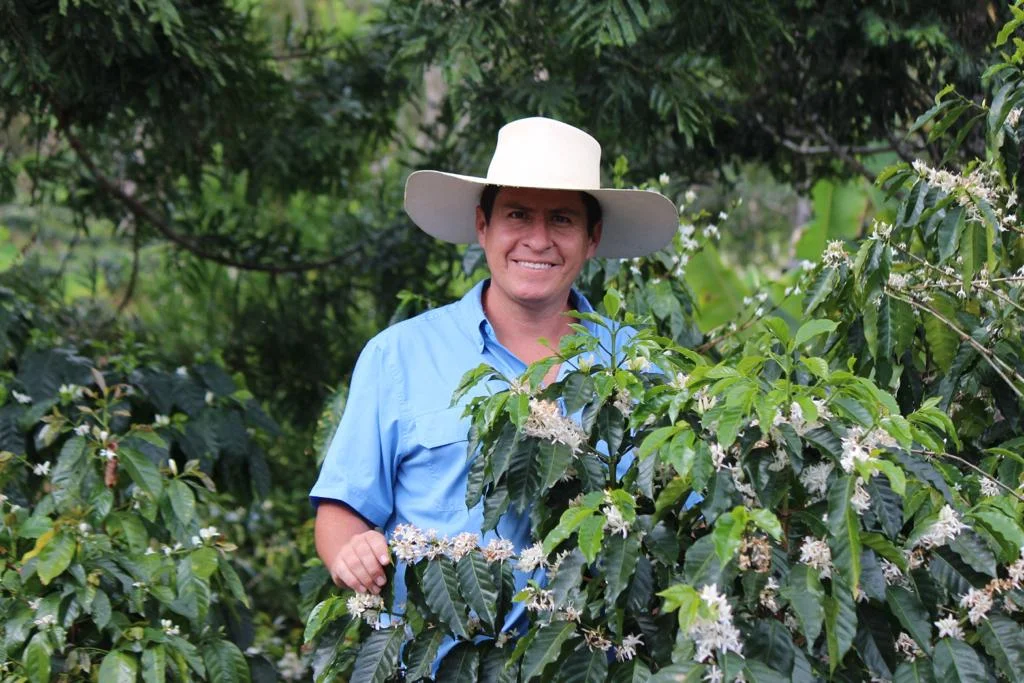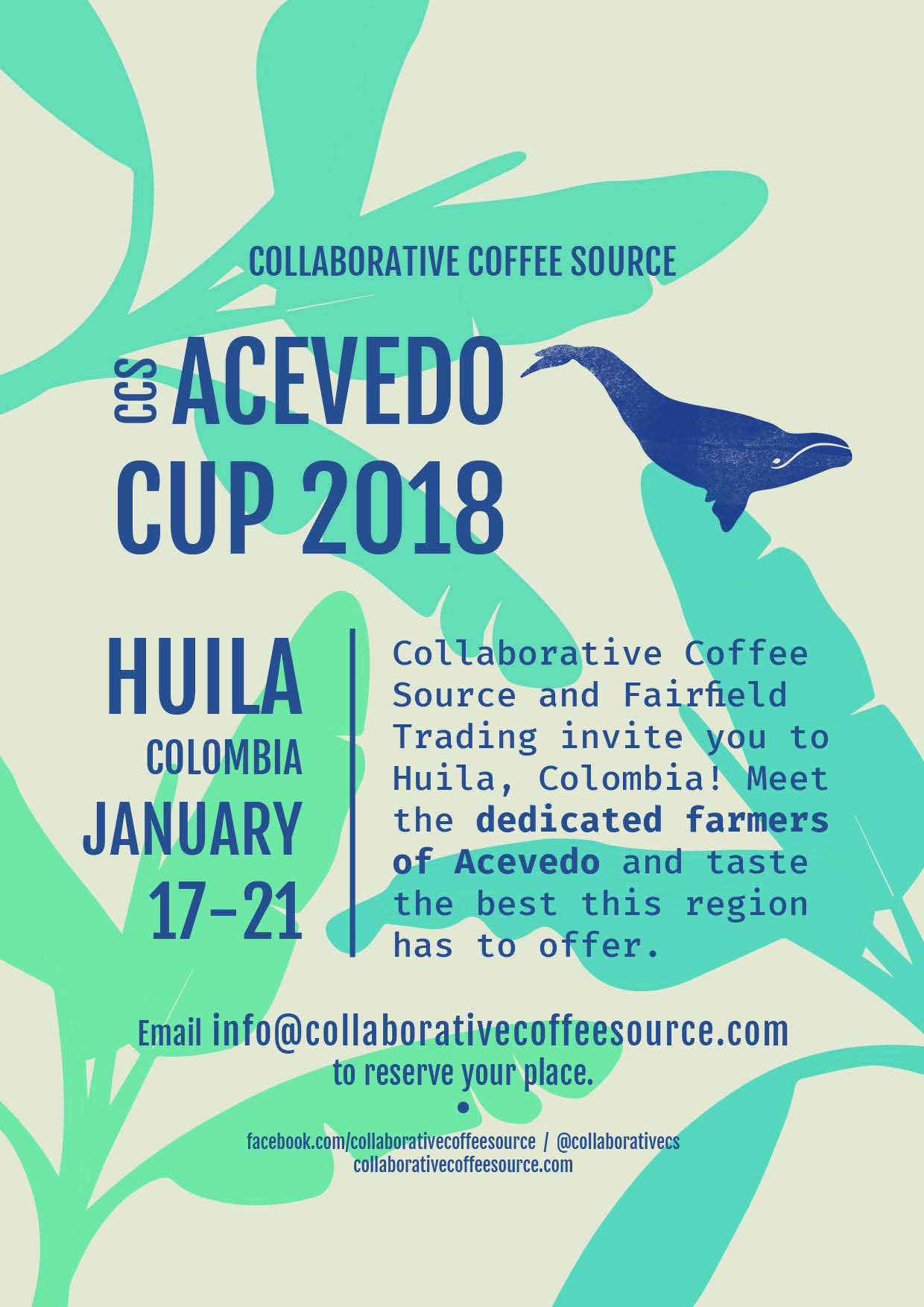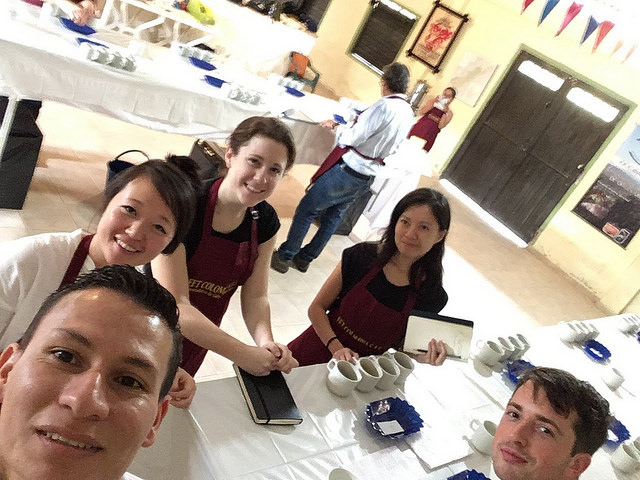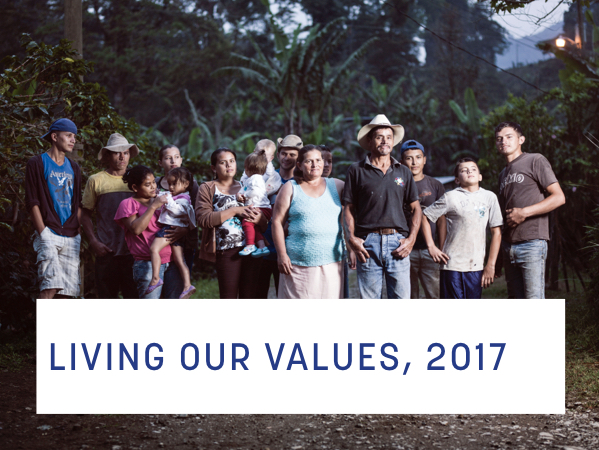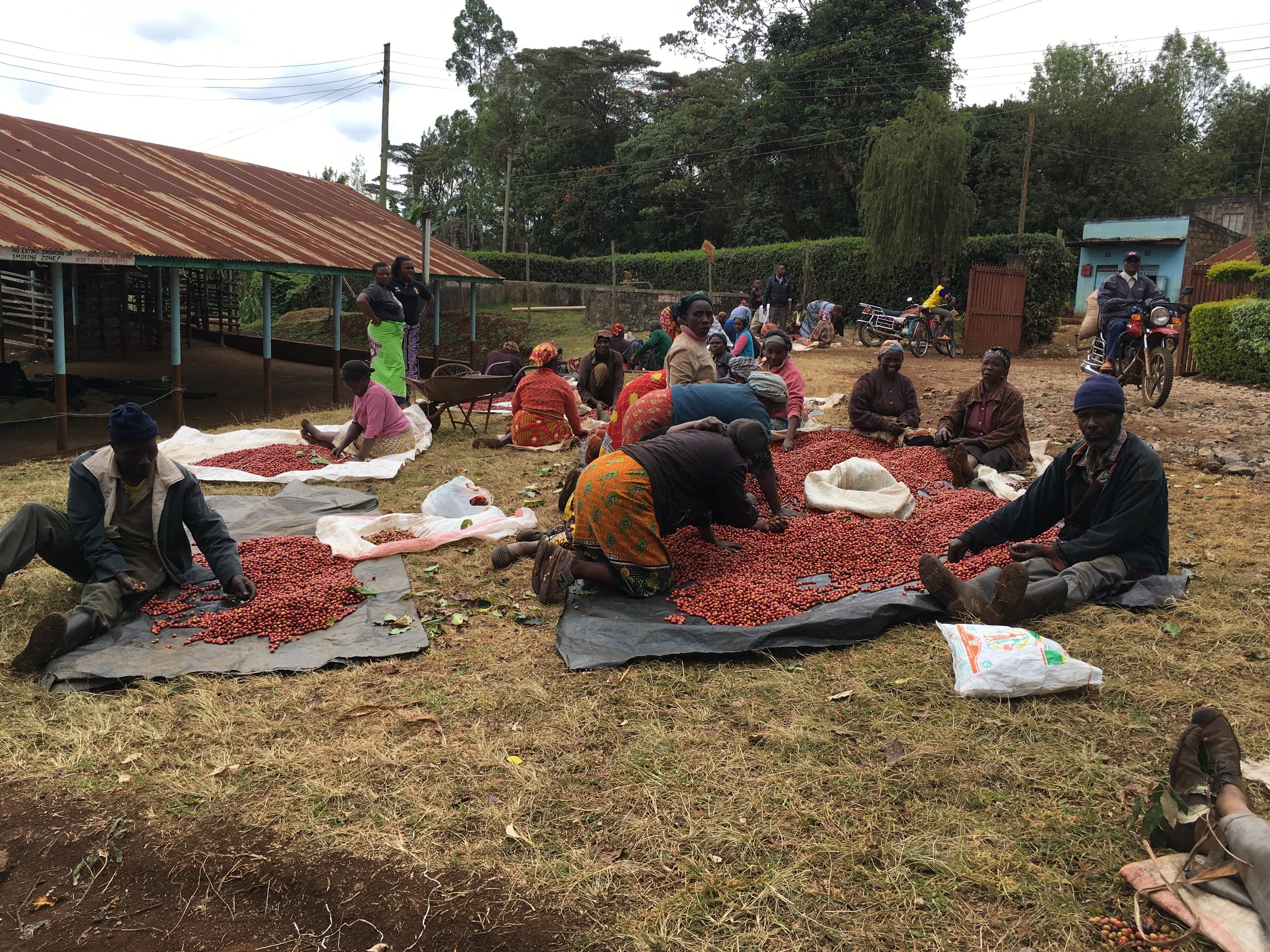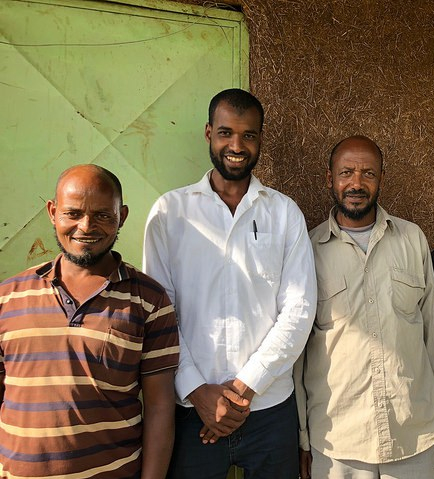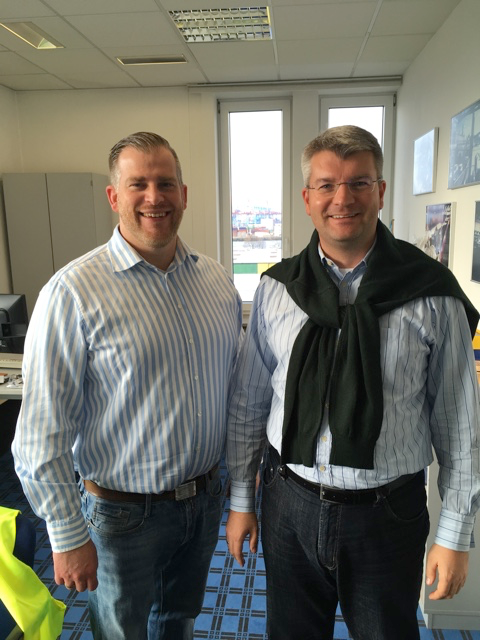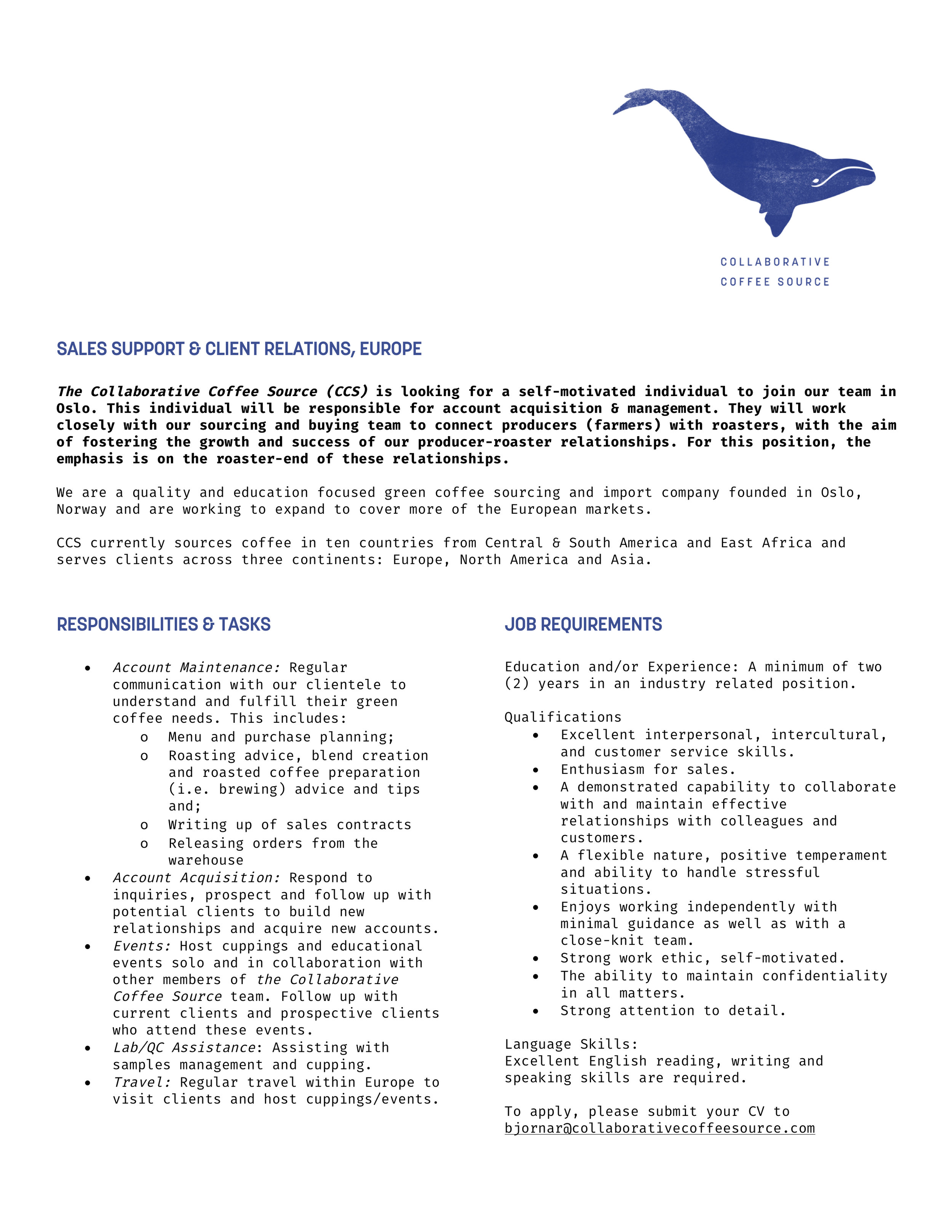
Meet a Farmer: Dorothy, Gaharo Hill
A story that is never told is that of the nano smallholder coffee farmer. I'm referring now to the many coffee smallholders who own less than 500 coffee plants and subsist on coffee as their sole or majority cash crop. The coffee producers that make some of our most exciting coffees each year and reside in places like Kenya, Ethiopia and Burundi. Their stories become anonymous, in large part, due to the sheer reality that it is impossible to engage with thousands of people at a time when buying coffee from the washing stations they sell their cherries to. But each of these farmers matter. From both an inter-relational perspective and also from the future of coffee perspective.
By now you've heard about and read report after report warning the coffee industry that climate change is having an increasingly deleterious effect on coffee production. Producers are increasingly saddled with harder to predict weather patterns, new pests and diseases as a result of these variant weather patterns, and confused plants that can't evolve quickly enough to adjust.
Here is where climate change researchers play a crucial role: it is through their work and collaborations with actors throughout our industry that will help us all try to face the seemingly insurmountable challenges that are developing all too quickly.
One of these researchers is Milda Jonusaite Nordbø, a PhD candidate from the University of Oslo's Department of Sociology and Human Geography. Milda's research is important not just because it's focused on climate change, but especially because it is centred on climate change adaptation. For her PhD dissertation, Milda's honed in on an origin that is dear to us, Burundi. And through her field work, we will gain insights into how the nano smallholder farmers that produce our amazing coffees first, view their work as coffee producers, and (hopefully) next, how they are adapting to climate change.

This is Dorothy, a coffee producer who delivers coffee cherries to our partner's, Long Miles Coffee, Bukeye washing station in Kayanza, Burundi. I met Dorothy, through Milda, during CCS' June buying trip this past summer. As part of Milda's data collection methodology, she decided to start a "photo journaling" project whereby chosen farmers were given cameras to document not only their daily life as a coffee farmer, but in particular the most important aspects of their daily life as one.
One of the biggest hindrances in social science research has been in getting as close to the reality of a subject's lived experience, as they truly live it. With photo journaling, there's more direct access to the point-of-view of the subject, rather than the researcher's interpretation of their experience. Yes, the researcher, in interviewing the subject about why they took the photo they did, comes in with their own bias and perspective, but the photos themselves do not lie and so using the photo as the basis for discussion is a great way to get close to what the person perceives as significant.
So, what does a day in the life of Dorothy look like? What does she see as important in her daily work as a coffee producer?
Turns out that Dorothy, along with the other few farmers who participated in her group of the photo journaling project, did not take photos of actual coffee. When asked to take photos of what's really important to them, Dorothy viewed her land and children as most important. This finding may run counter to what we would assume about someone who's sole basis for cash earnings rests on coffee. A question that this might raise is whether Dorothy, in not putting coffee at the forefront of her priorities, is negatively impacting her ability to be a great coffee farmer. It turns out this assumption isn't so.
Over the course of getting to know Dorothy over several weeks of meetings, Milda observed and learned the following:
- Dorothy is vigilant about mulching and selective picking, which she has learned from working with Long Miles' coffee scouts (agricultural educators and outreach);
- she views growing coffee in similar terms to raising a child: washing, nurturing, and caring for coffee requires hard work and diligence (e.g. mulching, planting shade trees);
- she is equally meticulous about quality control - she and her children spend the time to hand sort the harvested cherries prior to delivering them to Bukeye washing station;
- she is curious about the parts of the coffee chain that are beyond the washing station. When she was handed a copy of Standart Magazine, Dorothy had a million-and-one questions about almost every photo on the magazine's pages. It was the first time she had been introduced to the work of coffee professionals beyond a washing station and she was particularly eager to learn about and compare how coffee producers in other countries work.
Dorothy hadn't thought about the fact that there are non-Burundian coffee producers "out there" and when she saw a photo representing coffee production elsewhere, she immediately understood something more about why cherry quality is so important to the Long Miles team. That is to say that she, as a Burundian coffee farmer, is in competition with coffee farmers from other places. Say, Kenya, for example. Not only is this realization important to Dorothy in providing her with more meaning behind her work, it is crucially important for our industry that farmers know and can feel the significance of their work.

In finishing up her perusing of the magazine, Dorothy wanted us to pass on a question and message to the customers of her coffee: "Why do we get paid so little?" and "We [coffee producers] think of you when we grow coffee. We wonder if you also think of us." In addition, she wanted us to tell you a few more things: the government is making laws that make coffee farming more and more challenging, and the income she receives from coffee pays for the education of her six children.
-Melanie
Coffees from Burundi are scheduled to arrive on January 15th in Antwerp and January 18th in New Jersey. Contact Sal for availability in NJ and Nico for availability in EU/Asia.
Why farmers love meeting roasters at the CCS Acevedo Cup
You’re invited: The second annual CCS Acevedo Cup 2018 with Fairfield Trading will be held next month in Huila Colombia, from the 17th to the 21st of January.
Come and explore the beauty of Acevedo, discover the exceptional coffees of this region of Huila, and spend time with these dedicated Colombian farmers. Email info@collaborativecoffeesource.com to reserve your place.
The core of our business at CCS is connecting roasters to producers and forging long term relationships. The CCS Acevedo Cup is one of the most enjoyable and satisfying ways we achieve this.
It is hard to overstate the importance of having roasters attend this event. Their presence as judges and observers makes the farmers feel connected to the markets, and valued for their hard work and investment.
The cupping team, CCS Acevedo Cup 2016. Clockwise from top: Ria - Four Letter Word, Dillon - Parlor Coffee, Eduardo - Fairfield Trading, Melanie - CCS, Tali - Barismo.
In 2016, twenty coffees were selected as finalists for the CCS Acevedo Cup. When interviewed by Eduardo Urquina of Fairfield Trading after the event, all twenty expressed their gratitude to the roasters who attended, and described their pride at reaching the top twenty.
Ciro Lugo of Finca San Pedro in La Marimba, who won fourth and sixth place, said being a finalist filled him with emotion “For the first time I received recognition for the work that, together with my family, we do [on our farm]. The CCS Acevedo Cup is a great achievement for coffee growers in Acevedo.”
Albeiro Lugo (left) and his father Ciro Lugo won 4th and 6th place in the CCS Acevedo Cup 2016
Discovering quality
Very often, farmers are unaware of the quality of the coffee they produce. By entering the CCS Acevedo Cup they receive useful information in the form of cupping scores and tasting notes. This data serves as both recognition of their labors, and incentive to continue investing and improving their coffee.
Jon Wilson Poveda almost didn’t enter the competition. “I knew of the CCS Acevedo Cup,” he said, “but I hesitated to enter and I didn’t imagine I could win, because I knew that my fermentation and drying facilities were not helping to process the coffee well.” Jon inherited part of his farm, called “Danny” in La Marimba, and decided to buy another lot of land to increase production. Unfortunately that meant he didn’t have the funds to expand his fermentation facilities or improve his drying beds. In 2016 he also couldn’t find enough labour to pick his cherries fast enough, a common problem in the region.
However Eduardo Urquina of Fairfield Trading convinced Jon that several lots of his coffee were worth entering, and Jon won tenth place. Jon credits the forest reserve that borders his property for the quality of his coffee. The farm, which sits 1829 masl, draws water from the mountains to irrigate the coffee trees.
Leonte Polania of Finca El Ocazo in La Estrella was also surprised to place in the finals of the CCS Acevedo Cup. “I thought other producers had better varieties of coffee,” said the farmer who won 13th and 16th places. “We never rest during the harvest, it is arduous and constant,” Leonte explained. “Reaching the finals is the best compensation for that hard work.”
Sunset at Finca Bella Vista, living up to its name.
Specialty coffee as a sustainable model
The CCS Acevedo Cup is financial proof that specialty coffee can be sustainable for coffee farmers.
Elizabeth Abaunza of Finca La Esperanza in La Barniza described the validation of winning after much financial investment in their farm. “We received the news that we won 5th place with such joy. It wasn’t easy to improve the farm, we incurred debts and what we had, we earned with our own sweat. To receive this award is a relief and motivation to continue pursuing quality.”
“Selling traditional coffee isn’t profitable,” said Maria Bercerlia Martinez of Finca Los Angeles in La Marimba. With help from Fairfield Trading, Maria and her family have invested in improving quality in order to enter the specialty market, and their work was recognized when two lots of their coffee placed 9th and 20th.
“It was so gratifying to win two places in the final of the CCS Acevedo Cup 2016, thanks to the work of my husband and my son Daniel, who are so passionate about growing specialty coffee.”
Wilmer Cuellar of Finca Las Brisas in La Estrella was so proud to win 11th place, as it proved that producing high quality was financially viable. “I felt so happy to be representative of the group showing that quality coffee is the solution,” he said.
Wilmer was traveling at the time of the awards ceremony, but his wife and daughter attended, and proudly posted photos of the event on Facebook. “The other coffee growers congratulated us and we stood out in the coffee growing community.”
Meeting roasters
One of the best outcomes of the CCS Acevedo Cup are the relationships that are forged between roasters and producers.
Eighth place winner Otoniel Morales of Finca Las Delicias was very disappointed he couldn’t attend the awards ceremony of the CCS Acevedo Cup 2016, because he really wants to meet the people who buy his coffee. “It would have been fabulous to be present and to be recognized as a good coffee producer,” said the coffee grower from Marticas. “To know that what I produce is appreciated by coffee buyers, that is what motivates me to achieve the best quality.”
Julian Castro of the farm Villa Juliana was proud to receive 15th place. “Our coffee wasn’t the first, but it was among the best of many coffees entered!”
“The competition was well organized,” he said. “For my part, I want to thank the roasters who came. Thanks to them I got to show my coffee, and I hope they repeat the event in the future.”
Join us for the CCS Acevedo Cup 2018, Jan 17 to 21st and be part of this special event, recognizing the great work of farmers in the Acevedo region, and the exceptional coffees they are producing. Email info@collaborativecoffeesource.com for more information.
The top ten coffee producers, CCS Acevedo Cup, 2016
Living Our Values 2017
It’s that time of year when we pause to review our past and plan for our future. At CCS, we have taken this time to consider why this company was founded, its successes and frustrations, and our hopes for the coming years.
The report, “Collaborative Coffee Source, Living Our Values 2017,” is an attempt to highlight the work we are doing to achieve our mission to “source the right coffee, the right way.”
With this document we aim to hold ourselves accountable to our producers, partners, and customers, and everyone working in specialty coffee.
Before the end-of-year celebrations begin in earnest, we hope you find a moment to read this report. We invite you to question, comment and respond. Please email us at info@collaborativecoffeesource.com with your thoughts.
Read the report: Collaborative Coffee Source, Living Our Values 2017
CCS Warehouse Sale Continues - kenya
We are moving warehouses from to Vollers in Hamburg which means we're having a clearance sale to empty our Antwerp warehouse! That means you can pick up some exceptional coffees for bargain prices.
This week we're featuring some classic as well as exotic Kenyan profiles:
Mihuti AA
Turning parchment
Located in Kirinyaga County, Mukure location of Ndia Division near Kerugoya town. It was established in 1979 and sits on seven acres of land serving Kiaragana, Nguguini, Karuku and Gathuthi Villages. Currently it is affiliated to Mwirua Farmers Co-operative Society Ltd and its membership stands at 1000, of which 600 are active members. The factory is run by Daniel Kamau who oversees the production of an area that experiences a biannual production cycle with the early harvest running from April-June and the late second season running from October-December. The main varieties of coffee grown are SL28, 34 and Ruiru 11, with SL28, 34 accounting to 99% of all coffee produced.
This coffee scores 86.5 and features blackberries and chocolate notes.
Mihuti AA, Nyeri, Kenya
Score: 86.5
Normal Price: $13,29/kg
Now: $12,79/kg or $12,29/kg for a full pallet.
Mugaya AB
Cherry sorting pre-reception
Mugaya Coffee Factory was established in 1975 and is a member of the Mutira Farmers Cooperative Society. Located in the Central province within the Kirinyaga district, it serves more than 1600 farmer members, owning an average of 180 trees each. The main varieties of coffee grown here is SL28, SL34 and Ruiru 11.
This coffee scores 87 and features preserved lemons, plums, blueberries and hints of floral notes.
Mugaya AB, Kirinyaga, Kenya
Score: 87
Normal Price: $13,16/kg
Now: $12,66/kg or $12,16/kg for a full pallet.
Kathakwa AA
Dormans cupping lab, where this lot was found
Established in 1964 the Kathakwa factory is situated in the Central part of Kenya, Embu County, well known for producing high quality coffees. It is affiliated with the Kibugu Farmer Cooperative Society (FCS), and the factory serves two nearby villages of Kibugu and Nguviu. Other crops grown in the area include passion fruit, maize, beans and tea.
This washed mix of SL-28 & 34 scores 86.75 and features yellow raisin, blackcurrant blossom and honey.
Kathakwa AA, Kirinyaga, Kenya
Score: 86.75
Normal Price: $16,53/kg
Now: $16,03/kg or $15,53/kg for a full pallet.
These great offers won't last. Don't miss out. Contact nicolas@collaborativecoffeesource.com to order your samples and download the full clearance price list.
CCS offers frozen green coffee storage
We are pleased to announce that as of 2018, we will be offering frozen green coffee storage at three warehouses across Europe and the United States: Hall Street Storage (Brooklyn, New York), Schaefer's Cold Storage (Oakland, California), and Voller's Hamburg GMBH (Hamburg, Germany). Maintaining the high quality of green coffee we import is of the utmost importance to us at the Collaborative Coffee Source, so we're constantly looking for ways to improve. Look for no more evidence than the fact that we also now offer refrigerated containers from Ethiopia. Like refrigerated containers, our frozen storage service is a cost you will have to consider into your budget. You may wonder if this is worthwhile in the end, and may be skeptical of the results. Well, I can firmly and emphatically tell you that it flat out works.
I spent seven years working alongside George Howell, who tirelessly searches for ways to maintain the quality of each coffee he purchases. Back in 2004, he started freezing green in an effort to allow his business to showcase these pristine lots over the course of the entire year (and as it turns out, beyond!). He noticed immediate success, in that there was no noticeable degradation of flavor or vibrancy. Fast forward to 2012, and the scale had grown to a point where a large majority, if not all, of George's coffee was being kept in an industrial freezer twenty miles from the roastery. I mention 2012, because during that year, George decided to see what the limitations of freezing coffee were. So, we put aside two bags of a stellar Ethiopian coffee, and just waited. We obviously spot checked the coffee a couple times along the way (with astounding results), but it wasn't until three years later that we production roasted the lot. It was fantastic. As good as the day we locked it away. We showcased this coffee at the 2017 Re:co Symposium.
Skeptical? Don't just take my word for it. In conjunction with us showcasing it at Re:co, Chris Hendon (author: Water for Coffee, currently Assistant Professor of Chemistry at the University of Oregon) gave a presentation on (many subjects, but also) Cryogenics of Frozen Coffee. This presentation and accompanying slides are now available online as of yesterday. He does a brilliant job explaining the chemistry of how and why you should freeze coffee.
Not sold? Well, then, let's go for a name you all know and love: David Stallings, (formerly of Collaborative Coffee Source) also agrees that freezing green coffee is the best way to maintain its quality. David told me "I still have some coffees in my freezer from three years ago that taste great." David, like George, stores some green coffee on-site in chest freezers, much like those you use to store bulk meat and vegetables. Plus, he uses some industrial commercial freezer warehouses. It works on large and small scales, but a word of caution, make sure that the seals on the freezer are snug, and don't open and close the freezer too often. A stable environment is crucial to maintaining tip top quality. Other than that, I urge you to try it for yourself!
The science backs it up, and it works. I couldn't be more thrilled that we are offering this service, having seen and tasted the proof with my own taste-buds.
For pricing for each of the warehouses now offering this, please contact our sales team. Europe: nicolas@collaborativecoffeesource.com US West Coast: colleen@collaborativecoffeesource.com US East Coast: sal@collaborativecoffeesource.com
Matt
Matt answers your coffee roasting questions: roasting resources
This week Matt Hassell, Global Buyer, QC & Sample Management for Collaborative Coffee Source, and former roaster for George Howell Coffee, has been fielding your questions about coffee roasting on Twitter. @kbaker332 asks:
@collaborativeCS What made you first interested in roasting? Did you have a natural affinity for it or did you draw from any other sources to expand your knowledge and improve? #ccsQandA
— Kevin Baker (@kbaker332) December 13, 2017
Matt's response:
I mentioned in an earlier post that there are more roasting resources now than ever before. Without some of these, I would not have made anywhere near the progress that I did. We’re lucky to live in an age where information is freely and openly shared, and I’m glad to see that roasting is (now) no exception. So, in no specific order, here are some resources for new/curious roasters that have been very useful to me:
1. The Coffee Roaster’s Companion by Scott Rao I think this book does a great job of building fundamentals of roasting. When I started roasting, it was very much a trial-by-fire type deal. This was one of the first resources that I came across that forced me to rethink how I was approaching my roasts. It made me think about it as a process, instead of trying the same things over and over. I wouldn’t say I agree with 100% of the theories detailed in this book, but I haven’t seen a publication yet that everyone will agree on entirely. You will come away from this book better off than you started.
2. Mill City Roasters ‘Roaster School’ This web series has it all. It is super in-depth, and they do a very good job explaining principles of roasting in a way that can be immediately absorbed. Really, “Joe Morocco” might be one of the people that has helped me progress most in my career, despite only having maybe one conversation ever? Which reminds me…
3. Roaster’s Guild/Roaster’s Guild Retreat (Roaster’s Camp for Roaster’s Guild of Europe) Unfortunately this isn’t available everywhere, but going to just one of these was integral to my development as a coffee professional.
The conversation I had with Joe was minor. In fact, it was more of a group discussion. Day one of the retreat seemed a little bit like the first day of high school: kind of cliquey, and quiet. I was sitting in a group, and Joe was talking about getting people to open up and share. Long story short, Joe decides to put his money where his mouth is, and posted one of his profiles online, as to say, “you can’t steal someone’s business with a roast profile.” The next day, people are huddled together at tables drawing their profiles to the best of their recollection. The flood gates opened, and it was suddenly okay to share information. The next three days were a whirlwind of information.
They do a wonderful job putting these events on, and they get better every year. If you ever get the chance to go to one of these, absolutely do it. There is no better way to learn than to surround yourself with like-minded people from all over the country/world on a mountain/in the woods with a beer.
4. Modulating The Flavor Profile of Coffee by Rob Hoos You would be wise to just gobble up any resource Rob puts out there. This book is fantastic, and he is a great social media follow on all platforms. He does a great job detailing specific parts of the roast profile and how it alters the flavor. If you happen to roast on a Loring, he’s a very good resource for understanding how to operate the machine. As I mentioned before, I initially had a hard time finding good Loring resources. He’s one of the best.
Matt answers your coffee roasting questions: Loring vs Probat
This week Matt Hassell, Global Buyer, QC & Sample Management for Collaborative Coffee Source, and former roaster for George Howell Coffee, has been fielding your roast questions. Here’s a question from @jstnkndy:
@collaborativeCS You mentioned Loring in your last post, can you talk about your experience with Loring vs drum roasters? #ccsqanda
— Justin Kennedy (@jstnkndy) December 12, 2017
Matt's response:
As I briefly mentioned in the last post, I have worked on two different machines. The Loring Kestrel S35 and a 1950’s Probat UG-22. Looking back, it was kind of cool having the chance to learn to roast on two vastly different roasters. There is a difference between a person who is a “Coffee Roaster” in every sense of the title, and someone who just operates a coffee roasting machine. I attribute learning to use a second machine as a defining moment when I considered myself a Coffee Roaster. It forced me to understand why things were happening rather than just knowing how to follow a roast profile.
I first learned to roast on the Loring. Not only a Loring, one of the first ones ever made. It was difficult to find much help to improve my understanding because every resource seemed to be about drum roasters, and there are a few major differences with a Loring.
The Loring basically works like this: heat is pulled off the burner through a cyclone by a fan, then forced into the inlet of the drum. That heat is then forced through the bed of beans, and pulled out by a return fan (that returns the air back into the burner chamber) and the process repeats. Only, the drum is stationary, and the beans are churned by spinning paddles. So, there is no conductive heat, only convective.
Heat transfer rates differ drastically between the two methods. This ended up being the biggest difference between the two. The Loring requires a higher relative burner application to achieve similar levels of development. It took me a long time to figure out what the limits were. My better understanding of them, coupled with Loring’s recent upgrades, has given me a new appreciation for the roaster. I prefer the Loring over drum roasters for espresso roasts, and filter roasts for origins that are your ‘bigger body’ or ‘chocolate, caramel based sweetness’ coffees.
There is a lot of information available in print, both physical and digital, that details how a drum roaster works. They are by far the more commonly used roasters, and in my opinion, are much more intuitive. The one I learned on had some minor airflow and burner modifications, but was mostly as originally designed. Despite being twice as old as me, it was a remarkably consistent and produced a very good roast. The drum, being cast iron, stored a lot of heat. I suppose it depends who you ask, but to me, this was a major positive. I liked being able to back off the burner application heavily, and let the momentum of the stored drum heat carry me through some portions of the roast.
The most useful feature of the machine though, was the airflow damper. This damper, located behind the impeller fan (that pulls the air through the drum) could raise or lower the airflow depending on position, thus changing the ratio of convection:conduction. Proper adjustments can really help minimize some of the variables that we face every day in New England (temperature and humidity variance). These two differences, conductive heat and adjustable airflow, really made me feel like I could hit a small sweet-spot on a coffee. It is for this reason that I preferred the Probat over the Loring for brighter fruit, and higher acidity coffees.
Antwerp Warehouse Sale Continues
We are moving warehouses Vollers in Hamburg which means we're having a clearance sale to empty our Antwerp warehouse! That means you can pick up some exceptional coffees for bargain prices. Take a look at our full price list, or check out these offers:
Álvaro Rodríguez, Colombia
Alvaro Rodriguez
Alvaro Rodriguez is 66-years old and has been a coffee farmer his whole life. Although his passion is coffee, Alvaro also owns a dump truck and works as a truck driver, transporting construction materials. It is Don Alvaro's meticulous attention to his coffee plants that keeps our partnership with him thriving year-after-year. Alvaro is one of the most fastidious farmers in LP&ET's Neighbors&Crops program when it comes to coffee fertilization and harvesting.
His washed coffee scores 87 and features red apples, plums and a full body.
Álvaro Rodriguez, Finca Los Naranjos, Cundinamarca, Colombia
Score: 87
Normal Price: $18,47/kg
Now: $17,97/kg or $17,47/kg for a full pallet.
Duromina, Ethiopia
Duromina Cooperative, Ethiopia.
Left to right: Teka, Mohammad and Abdul Assiz, site managers of the Duromina Cooperative, near the city of Agaro, Jimma zone, Ethiopia. Their 86.5 coffee expresses blueberry, slight lime notes with a chocolatey medium body.
Duromina cooperative, Ethiopia
Variety: Limu Heirlooms
Score: 86.5
Normal Price: $11,62/kg
Now: $11,12/kg or $10,62/kg for a full pallet.
Mithuti AA, Kenya
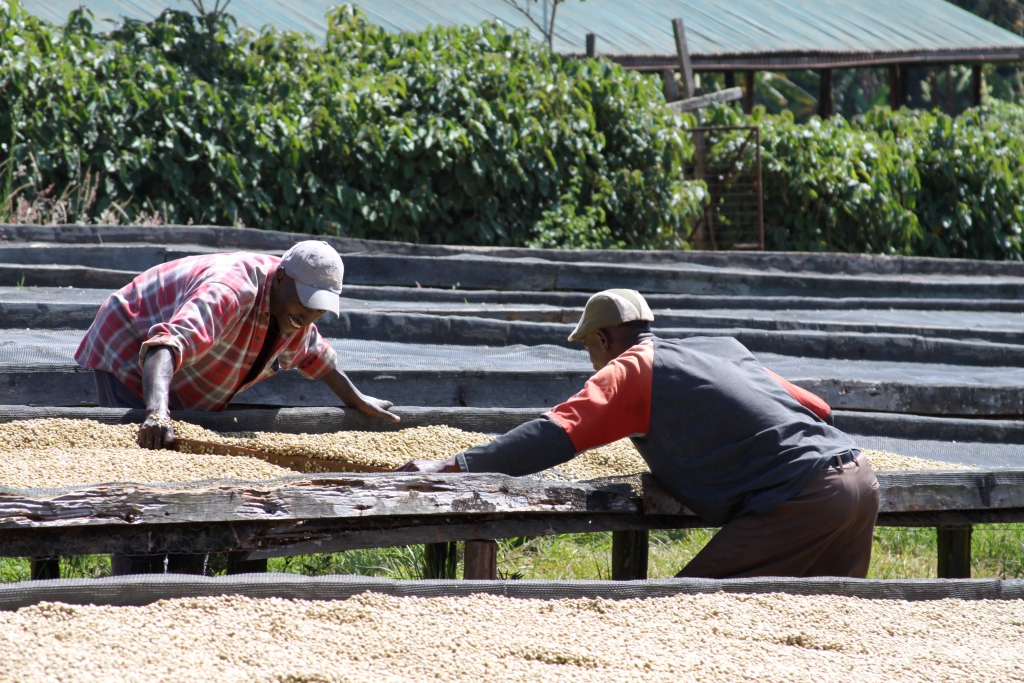
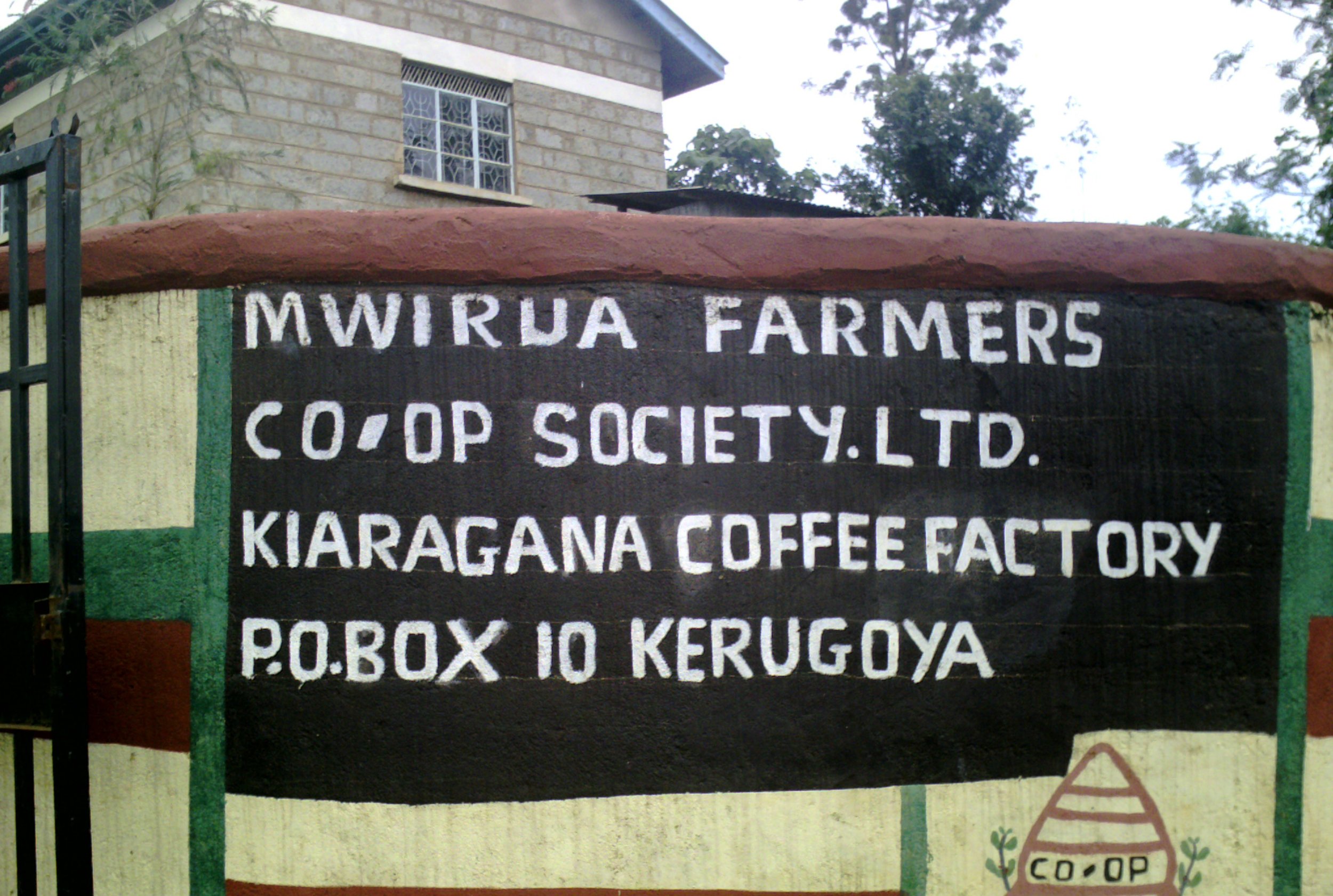
Factory manager Daniel Kamau works in the Kiaragana Coffee Factory, located in Kirinyaga County, Mukure zone of Ndia Division near Kerugoya town. It was established in 1979 and rests on 7 acres of land serving Kiaragana, Nguguini, Karuku and Gathuthi Villages. Currently it is affiliated to Mwirua Farmers Cooperative Society Ltd.
This washed mix of SL 28 and SL 34 features earl grey, bergamot, nougat and a prune finish.
Mithuti AA, Kenya
Variety: SL 28/34
Score: 86.5
Normal Price: $13,29/kg
Now: $12,79/kg or $12,29/kg for a full pallet.
These great offers can't last. Don't miss out. Contact nicolas@collaborativecoffeesource.com to order your samples and download the full clearance price list.
Matt answers your coffee roasting questions: washed vs naturals
This week Matt Hassell, Global Buyer, QC & Sample Management for Collaborative Coffee Source, and former roaster for George Howell Coffee, will answer your roast questions. Here’s a question from @AR0101:
@collaborativeCS what do you need to consider when roasting naturals vs washed coffees? #ccsQandA
— Andres Rodriguez Ruiz (@AR0101) December 10, 2017
Matt's response:
I don’t have nearly the experience roasting naturally processed coffees that I do roasting washed processed. Being in my new position, I find myself with a lot more exposure to naturally processed coffees, so I’ve been re-evaluating my approach and understanding quite a bit. Luckily, I’ve found some fantastic resources to aid in the process.
Roasting a naturally processed coffee requires a longer, slower drying phase and a longer development time. The flavor profile of these coffees is enhanced much more with longer caramelization times. A roast that is too fast, or lighter on the development spectrum may present itself as being harsh and imbalanced. Of course, this is a bit of a generalization as a natural Brazilian coffee would definitely require a different roast profile than an Ethiopian counterpart. They would be unique because of other factors (density, concentration of acids and sugars, terroir, etc.) In general, though, longer times pair with the deeper sweetness and bigger body that is characteristic of natural process coffees. In my experience, I’ve always preferred roasting naturals on a Loring over a drum roaster.
With washed process coffees, you’re able to be much more aggressive with heat application. Shorter roast times with lower-end temperatures have always been my preferred method. This is effective in highlighting the higher acidity found in these coffees. Another point to consider is that washed processed coffees often go through more sorting than naturals. Batches of beans that are more refined in terms of sizing, density, and moisture will be easier to develop homogeneously. You run less of a risk of leaving some of the beans underdeveloped.
Counter to roasting naturals on the Loring, I’ve always preferred roasting washed coffee on a drum roaster. I don’t know why either, because it doesn’t necessarily correlate to coffees that I’ve tasted from other roasters.
Matt will be answering your Twitter roast questions until Dec 12, 2017. Post your questions on Twitter to @collaborativeCS and use the hashtag #ccsQandA.
CCS Acevedo Cup, January 2018
Join us for the second CCS Acevedo Cup by Fairfield Trading and Collaborative Coffee Source.
Wednesday Jan 17 to Sunday Jan 21, 2018 Acevedo, Huila, Colombia
Places are limited. Email info@collaborativecoffeesource.com to book your place.
The award ceremony, CCS Acevedo Cup 2016
The value of cupping competitions
The CCS Acevedo Cup is valuable in so many ways. For roasters it offers a condensed experience of a region, a chance to meet many farmers and cup their coffees at once, to see their land, engage in their community, understand their hopes and plans for the future.
For the coffee growing community of Acevedo it offers a chance to meet the people who buy, roast and serve their coffee, to learn about the markets where their coffees are sold, and the impressions of the consumers who drink the final product. The CCS Acevedo Cup also offers the farmers a reason to get together, to share knowledge, skills, experience and stories.
And, of course, cupping competitions like these offer recognition for the hard work of the farmers. This recognition, combined with the financial reward for the winners, incentivizes continued effort to produce high quality coffee.
Alexander Ordoñoz, proud third place winner of the CCS Acevedo Cup 2016.
“I felt really proud,” said Alexander Ordoñez of Finca Los Naranjos, who won third place in the CCS Acevedo Cup 2016. “My wife and two children accompanied me [to the award ceremony], and it was a beautiful experience because they are part of the work one does on the farm. And this third place prize motivates me to continue improving so I can win first place.”
CCS Acevedo Cup, postponed for one month
The inaugural CCS Acevedo Cup ran in December 2016, which means this event is delayed slightly. Unfortunately weather has been working against the farmers of Acevedo this year. Heavy rains caused later flowering, and as we are seeing in so many regions, the harvest has been delayed. It happens in agriculture — there are good years and bad years. Sadly for the Acevedo community, this isn’t a great year.
Regardless, there will be some great coffee to cup come January. Rather than cancel the event, we decided to postpone it for one month, giving farmers a little more time to harvest and process their coffee, and to give our partners Fairfield Trading the time to properly cup and select the best entries for the competition. Both Fairfield Trading and CCS are enormously proud of this event, and we are committed to recognizing the hard work and delicious coffee of the Acevedo coffee growing community, in good years, and not so good years.
We look forward to sharing this experience with you. Email info@collaborativecoffeesource.com to book your place.
Matt answers your coffee roasting questions: freezing, then roasting
This week Matt Hassell, Global Buyer, QC & Sample Management for Collaborative Coffee Source, and former roaster for George Howell Coffee, will answer your roast questions. Here’s a question from @_mr_B:
Hey @collaborativeCS, when freezing (green) coffee, how much time can/should you wait before roast? And how does it impact roast? #ccsQandA
— Bjørnar Hafslund (@_mr_B) December 7, 2017
Matt’s response:
I’ve always found that you can roast green coffee 24-36 hours after it is pulled from the freezer. Though in that short of a time, a common issue I came across was that beans on the outer part of the packaging were (obviously) a lot more thawed out than the ones in the center. So, (and this may be easier said than done) you should make your decision based on a sample pulled from the middle to ensure proper defrosting. In my own case, that often meant breaking a vacuum sealed bag to check the middle, which starts the degradation period. It pays to wait a bit longer, and to be totally sure.
An ideal waiting period for defrosting green coffee is more like 72-96 hours. Not only will you then be sure that all the beans are properly defrosted, but that the free-flowing water in the bean has had enough time to migrate back to all portions. When beans are frozen, the water migrates to the center, thus leaving the outside a bit drier. The best way to defrost is much like a drying bed in that a thin, even mass with more surface area will produce better results.
You can run into a couple of issues roasting coffee that has been frozen. If the beans have not had enough time to return to ambient room temperature and are still a bit cold, the first thing you’ll notice in the roast is your bean temperature plummeting. Bean temperature readings typically aren’t a super reliable metric anyways, compound the problem with extra cold beans and you’ll be in a tough spot. Your reaction will be to apply more heat, which will only make it worse. Throw in that the outside of the bean already has less water, and the inner part has more, and you’re headed for an uneven roast with quite a bit of scorched flavor. It is best to wait an extra day or two.
And how does freezing coffee impact the roast? I’ve been asked that question so many times, and it took me a while to figure out the answer. I was in a unique position at George Howell Coffee where the large majority (we’re talking 99%) of all the coffee I had ever roasted had previously been frozen. It wasn’t until recently that I’d had more opportunity to roast coffee that hadn’t.
I would say the biggest difference is that it seems much easier to dry coffee that had gone through the freezing and thawing out process. I attribute this to the breaking of cellular structure during the freezing process. Water expands when frozen, cell walls break, the bean is sort of “broken” or maybe “broken in” is the better analogy. Anyways, it’s more receptive to heat. However, once you’re through the drying phase of the roast, and things have stabilized, it doesn’t appear to follow any other set of roasting principles. You can apply normal theory, and effectively nothing is different. Perhaps I will discover some other abnormalities as I get more familiar with roasting non-frozen coffee.
Matt will be answering your Twitter roast questions until Dec 12, 2017. Post your questions on Twitter to @collaborativeCS and use the hashtag #ccsQandA.
Matt answers your coffee roasting questions: decaf and flavor
This week Matt Hassell, Global Buyer, QC & Sample Management for Collaborative Coffee Source, and former roaster for George Howell Coffee, will answer your roast questions.
Here’s a question from @yet2com:
@collaborativeCS Is there a way to get the same taste out of decaf coffee that you could get with caffeinated coffee? #notodecaf#ccsQandA
— yet2 (@yet2com) December 6, 2017
Matt’s response:
The short answer is – yes. Though, the problem doesn’t come from the roasting process, so much as it comes from how the coffee was decaffeinated. There are a few different ways to decaffeinate coffee.
One of the most common processes is to use a solvent to dissolve the caffeine. Of course, this method is damaging to the flavor because it’s not possible to target just the caffeine. Other positive compounds are also being dissolved in this process and ultimately have a negative influence on the cup. Typically, lesser quality coffees are selected for this method, as the flavor profile is going to be compromised anyways.
Another process for decaffeination is called “Swiss Water Process”. To do this, you take a green coffee extract that has had the caffeine removed, and add it to water to make a solution that still has all the positive compounds found in coffee. Then, you add the coffee that you would like to decaffeinate. The solution will absorb the caffeine through osmosis, and you’re left with what should be the same coffee as before. This method does require a little more cost, and may be the reason why it’s lesser used.
With that said, the decaffeination process does influence how the coffee behaves in the roaster. With solvent based decaffeination methods, it is common practice to roast the coffee darker to add body to a coffee that may be lacking character (due to loss of positive compounds) at lower roast levels. Coffee that has been decaffeinated is typically more porous, and receptive to heat. So, the roasting process is a bit more sensitive. It becomes very easy to influence. Roast levels can also be a bit misleading, as the coffee will appear to be roasted darker than the flavor would suggest.
There are fantastic decaffeinated coffees out there! You may just have to hunt a little.
Matt will be answering your Twitter roast questions until Dec 12, 2017. Post your questions on Twitter to @collaborativeCS and use the hashtag #ccsQandA.
Matt answers your coffee roasting questions: roast recipes
This week Matt Hassell, Global Buyer, QC & Sample Management for Collaborative Coffee Source, and former roaster for George Howell Coffee, will answer your roast questions. Here's a question from Tom D, @ohthecommotion:
How much of the roasting process is "feel" and how much do you think can be taught? Can I follow a recipe and make a great roast or do I need to just do it for a while? #ccsQandA
— Tom D (@ohthecommotion) December 5, 2017
Matt's response:
This question is so excellent because the answer, for me, has changed dramatically in the last few years.
I think it goes without saying that any task or skill you learn requires a certain level of understanding to not only do it well, but to repeat those results. Lord knows roasting is all about repeating results.
When I first started, people were very nervous to share roasting tips and profiles. There was no Cropster to log, overlay and send roast profiles, or Ikawa sample roaster capable of transferring profiles through text message. There was no ‘Coffee Roaster’s Companion’. Information sharing was scarce. So, I had to rely on being ‘in tune’ with my machine.
The last few years have also brought a lot of scientifically backed research that allows us to understand how to manipulate a multitude of complex chemical reactions and achieve a sweeter, cleaner cup. There are a lot of tools and resources being introduced that help aide in this process. There seems to be a lot more of a science-feel towards roasting than what there used to be.
But, that isn’t to say we’ve progressed to the point where we can just build a recipe for roasting. There are too many variables that are different. Perception of what is “good”, roasting environments (roasting in New England with the weather changes, not fun), and roasting machines themselves (Loring vs. Probat, different location of thermocouple, thickness of thermocouple, etc, etc…) Roasters must be in tune with their machine and have the ‘feel’, that will come with (a lot) of time. But, a good foundation is built on knowledge and understanding.
Matt will be answering your Twitter roast questions until Dec 12, 2017. Post your questions on Twitter to @collaborativeCS and use the hashtag #ccsQandA.
Purchase Planning
At the core of CCS' way of sourcing coffee is the principle of establishing long-term relationships between producers and roasters. We believe that everyone benefits when true partnerships are at work amongst the actors in a coffee's life cycle. And sourcing partnerships are based upon commitments. For the producer: to deliver coffee at a certain quality, within a certain time frame, at a mutually determined price; for the buyer: committing to a certain volume of a specified quality and agreed upon price. Practically, what does this mean and how does this benefit everyone?
For producers, forward purchasing means security and a means to better plan for future harvests. When you're not wondering who your buyer(s) will be and how much coffee you'll sell at what price, you can focus on actual coffee producing activities.
Forward contracting means more than economic security, however, it also represents trust and service. For Lauren at Long Miles Coffee in Burundi, that trust and service is afforded to Melanie who has managed the purchasing of Long Miles Coffee for CCS for many years. Lauren had this to say:
"Our whole team takes extra care when preparing and exporting 'Melanie's coffee.' For the team, your advance commitments [mean that] CCS isn't just an exporter. There is a real person called Melanie, who represents a company called CCS, to whom we are committed to in real relational terms to produce a final product. We expect to produce 'Melanie's coffee' each year and look forward to hosting Melanie when she comes to check in on her coffee."
Customer Planning Spreadsheet
Forward purchasing also means security for roasters: knowing in advance what will be on your menus so you can work in ahead of time on marketing and other preparations for new arrivals. It also means access to more interesting and higher quality coffees, as you become the first-in-line to access the top lots of the harvest. Pricing too becomes more flexible with forward purchasing, once certain volumes are reached.
Emily from Tandem Coffee in ME had this to say about their experience forward contracting with us:
"It forces us to think very hard about realistic projections which can be quite helpful. I also think that it is more efficient: For example, we spend a few days out of the year focusing on prepping our run of Guats and then we don't have to spend more of our time (and importers' time!) requesting samples, sample roasting, cupping, etc."
She also points out one potential downside:
Obviously you could be limited in your selection if you haven't left yourself any flexibility...
While forward planning does need to be considered carefully against the unpredictability of business needs, we believe that what one sacrifices in flexibility is made up for in exclusivity and a tailored purchasing experience. One of the things CCS is best known for is providing in-depth personalized buying. For example, Belleville in Paris buy most of Neptaly Bautista's production year-after-year and have therefore been able to create great anticipation within their market for "fresh crop Neptaly." So not only does Belleville exclusively offer Neptaly's coffee in their market, their market is also given an opportunity to receive invaluable education about the coffee life cycle, an otherwise nebulous concept if one sells different coffees menu after menu.
How it Works
Bjørnar, Nicolas, Sal or Colleen will meet with you, either in person or over the phone. The ideal time is January, but anytime is a good start time, it just needs to be in advance of the origin visit.
Step 1: Together you'll work out the following:
- Total annual projection from each origin. Preferably right down to the cup profile:
- e.g. 20 Bags of pulped natural Brazilian coffee with milk chocolate profile, 84-85 points at, $4.25/lb, target delivery month: May
Step 2: Contracts signed. We suggest "SAS Replace" terms, meaning if you don't approve the initial sample, you receive another at a similar market level.
Step 3: Samples are sent to you for approval.
Step 4: Coffee arrives to your warehouse for delivery or pick up.
Interested in forward contracting? Get in touch!
North America East: sal@collaborativecoffeesource.com
North America West: colleen@collaborativecoffeesource.com
Europe: nicolas@collaborativecoffeesource.com
-Bjørnar
We're changing warehouses
We’re moving warehouses! Amazing coffees for clearance prices. See the Clearance Price List, and contact Nico for samples.
Our priority is to deliver your coffee as quickly as possible and in its best possible condition, and we know there have been some problems in this area for customers receiving coffees from our warehousing and shipping provider in Antwerp. We take your feedback very seriously, which is why we are switching our main European warehouse to Vollers in Hamburg, a warehousing company focused on specialty coffee.
Hamburg’s long history with coffee
Hamburg is a substantial sized port, located 86km inland from the ocean on the Elbe River, with a very long history with coffee. The first coffee house in Hamburg opened in 1677, and the warehouses lining the Speicherstadt archipelago in the HafenCity quarter, built between 1883 and 1927, form the longest continuously running warehouse complex in the world. The area was awarded status as a Unesco World Heritage Site in 2015.
Vollers' founder, Berthold Vollers, began warehousing coffee in 1932 when he set himself up as a self-employed port inspector and warehouse clerk in Bremen. His first client was his former employer, Roselius & Co (Coffee-HAG).
Photo courtesy of Vollers Group
Why Vollers?
Last week I spent the better part of an afternoon with Marco Franz, the Department Manager for Commodities, and Finn Börnsen, Group Development Manager, at Vollers. They took considerable time out of their day to show me their facilities and discuss the ways they can better store and ship your coffee in Europe.
We had a long discussion about the issues we hope to solve with storage and shipping, plus our plans for the future. Vollers regards the specialty side of coffee as the most interesting and fastest growing part of the business. Their attitude was refreshing: if we have a request or an idea for a new service, they will try and find a solution.
Marco Franz and Finn Börnsen of Vollers
The Vollers Facility
Marco took me on a tour of the facility; their system is impressive. Vollers have a machine that wraps their pallets in plastic, and another one that straps the pallets. For normal people, that might not seem so exciting, but for a logistics guy like me it means standardized quality when the pallets are wrapped and strapped -- more stable and better security. They have an IT system that is cross-checked with a physical label on each lot. When bags are taken from the lot, name of the person, number of bags and work order number are written on the label.
By the 3rd quarter of 2018 they plan to launch a system that will allow customers to log in and check their current stock, as well as track shipments sent with Vollers' own trucks. They are also working on developing a machine that will allow them transform a 60kg bag into 1-2kg vacuum blocks. This will be a great option for selling smaller volumes which could be sent by courier for quick delivery.
Freezing coffee
Additionally, Vollers can freeze coffee using services of a third party, and may in the future offer freezing within their facility. As Matt wrote, shipping times are getting slower and slower, so refrigerated transport combined with frozen storage may be the key to keeping coffees fresh and vibrant.
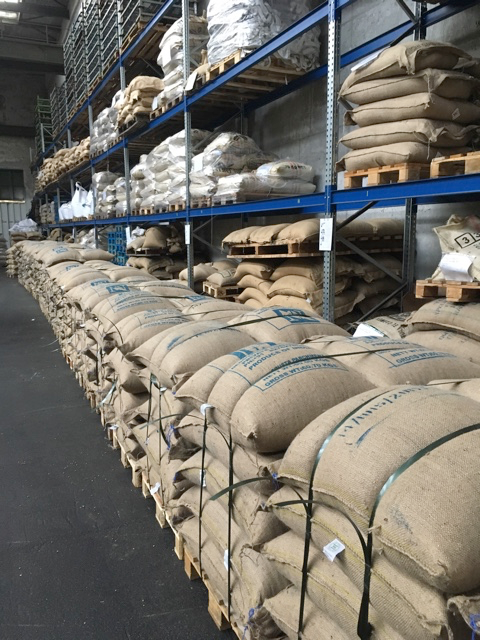
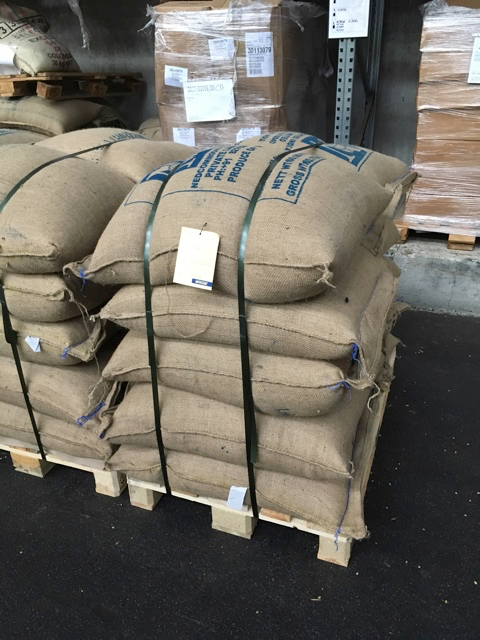
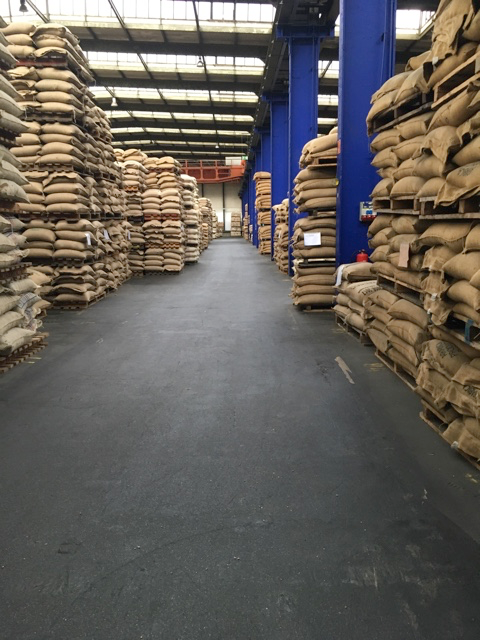
European Transport Network
Vollers offers transport via their own food-certified trucks that service the UK and Germany. Additionally, they have a network of warehouses throughout Europe, linked by daily transport including Bremen, Rotterdam, Amsterdam, Antwerp, Bury St. Edmunds, Genoa, Trieste, Riga, Tallinn, Moscow, and by the end of next year they will add Gothenburg. This means we could potentially ship your coffee for collection at a warehouse near you.
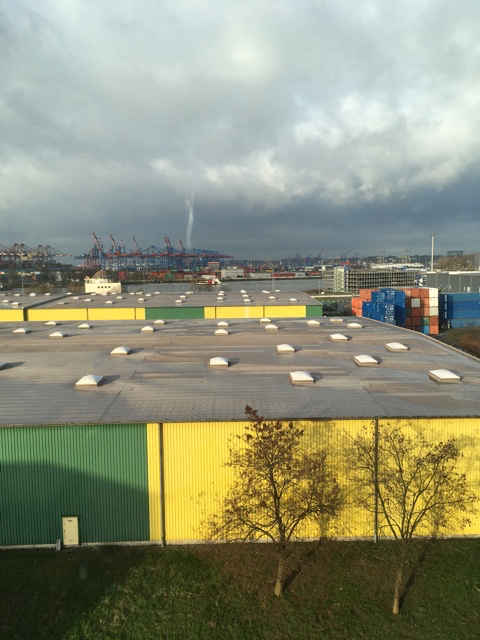

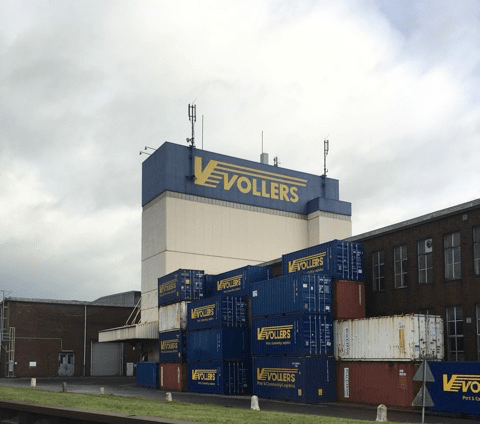
Benefits at a glance:
- Unloading of container after arrival to port will take 1-3 days. This means coffee will be available for release maximum 3 days after arrival to port.
- We can organize transport to our European customers via a fleet food-certified trucks.
- For our customers already be buying coffee stored with Vollers, we can reduce costs of mixing pallets and transportation.
- Reduced transport cost for our German, Polish, and Nordic customers and potentially for our customers in larger cities.
- Reduced transport time to German, Polish, and Nordic customers.
- Possibility for freezing coffee
- Better IT systems for inventory management
- An open mind towards improving and adding services
We are really excited by the move to Vollers and the significant improvements it will bring for storing and shipping your coffees. The first shipment to Vollers will be early 2018. If there are any questions about our move to Vollers in Hamburg and how it might benefit you, please get in touch.
Travis
Antwerp Warehouse Clearance
Moving to Hamburg means clearing out our Antwerp warehouse, which means we have some exceptional coffees for clearance prices! Check out the Clearance Price List, and contact Nico for samples.
Co-Roasting Spaces — Building Coffee Communities
Announcing the first in a quarterly series of cuppings at Bay Area CoRoasters, Berkeley, California: Tuesday Dec 5, 10am. See below for details and reserve your space on our Facebook page.
Co-roasting spaces such as Bay Area CoRoasters (or CoRo for short) are crucial businesses in the specialty coffee industry, providing an entry into the expensive business of roasting. Co-Ro offers memberships to coffee companies who then receive scheduled time on one of the four roasters on their production floor of their West Berkeley space.
An affordable beginning for new roasters
Co-roasting spaces give young companies time to practice, learn and build their business, before making the large investment of time and money in finding their own space, setting up machines, and acquiring the necessary permits.
“Our goal is to provide all of the infrastructure and capital intensive equipment for you to start a coffee business,” said Floy Andrews, co-founder and CEO of CoRo. “All of that investment is shared by different brands.”
One of four roasters available on the CoRo production floor. Image courtesy of Bay Area CoRoasters.
CoRo is also in a position to keep their roasting space up to date. “We’re really focused on having the newest technology,” Floy said. For example, “we’re switching out the afterburner with a thing called a Vortex which is a water quench mechanism. It collects the dirt in the smoke, and its strained into a bucket. It’s not toxic - it’s actually good for your plants. Afterburners release a lot of CO2 and [the Vortex] aligns more with the values of Co-Ro.”
Building a Coffee Community
But CoRo is so much more than simply an affordable way to roast. In keeping with the spirit of the Bay Area where they are located, CoRo has a mission to create a community. In addition to the four roasters available, the CoRo space offers members a QC lab and a cupping room. Here they hold events and offer their members training and development on their journey as coffee professionals.
CoRo offer classes in roasting and production. Image courtesy of Bay Area CoRoasters.
Regular cuppings are held in the CoRo Cupping Room. Image courtesy of Bay Area CoRoasters.
Then there’s the “Green Wall”, a space for importers to leave greens samples of their coffee for roasting, cupping and comparison. “The way green coffee is distributed, traditionally, is sort of out of sync with the way these small roasters operate,” Floy explained. “Our Green Wall is our first endeavor in connecting small roasters to a range of importers. It plays into the community space function of Co-Ro.”
The Green Coffee Wall at CoRo. Image courtesy of Bay Area CoRoasters.
CCS and CoRo Community Events
At CCS we believe strongly that community is essential to the growth and sustainability of the specialty coffee industry, so we're excited to announce two initiatives:
CCS Quarterly Cuppings at CoRo
Colleen will be running quarterly cuppings in the cupping room at CoRo! The first will be next Tuesday December 5 at 10am. Join us for a cupping of Late Harvest Hondurans from Santa Barbara, plus Colombian coffees from Huila and Tolima. Contact Colleen to learn more, or sign up on our Facebook page.
Roasting Q&A with Matt Hassell
Matt Hassell, Buyer, Sample Manager and QC Director at Collaborative Coffee Source, and former roaster for George Howell Coffee, will be answering your roast questions starting immediately after the cupping at CoRo next week. The Q&A will begin at midday Tuesday Dec 5 and run until midday Tuesday Dec 12. Whatever your roast quandary, Matt is here to help. Post your question on Twitter to @collaborativeCS and use the hashtag #ccsQandA.
Farmer Profile: Jesus Antonio Saavedra, Finca El Placer
Tolima, Colombia
Twenty years ago Antonio Saavedra sold his farm at 1200 masl in Tolima, Colombia, and bought another further up the hill at 1715 masl. Yep, twenty years ago. Before anyone was talking about global warming and its impact on coffee, Antonio realized that temperatures were rising and it would soon be impossible to grow great coffee on his lower altitude farm.
To reach his current farm called El Placer, located in the San Antonio municipality of Tolima, you have to travel one and a half hours by horseback from the nearest road. It’s the kind of trip Antonio is accustomed to making. He once travelled eight hours by horseback to reach the town of Planadas in Tolima, in order to deliver a sample of his coffee to Alejandro Renjifo from Fairfield Trading, our partners in the region. Things are spread out in that part of Colombia and roads don't always take you where you need to go.
This is why Antonio created a school on his property. Seven children from neighboring families attend the school, which covers both primary and secondary curriculum. Of course, "neighbor" is a relative term. Their farms are quite far from Antonio’s, too far for the kids to travel back and forth on a daily basis. So they arrive Monday morning and stay until Friday afternoon.
Children tending to their vegetable garden beside the school on Antonio Saavedra's farm in Tolima, Colombia
Their teacher is also the head cook and chief caretaker. She walks one and a half hours up the hill to Antonio’s property on a Monday morning, then teaches, cooks and cares for the kids until they all go home on Friday. Next to the school building is a vegetable patch and part of the kids’ daily activity is to maintain the garden and prepare meals using the vegetables they have grown. The kids could attend a government school, but it is further from their homes than Antonio's farm, and it doesn't provide housing during the week. If it wasn’t for the school Antonio built on his property for his neighbor's children, it is unlikely they would get a continuous education.
New plantings on Antonio Saavedra's farm, Finca El Placer
The dedication of the teacher and the children is a reflection of Antonio’s own serious approach to life and work. The quality of his coffee is a result of daily persistence and willingness to learn. Antonio renovates his farm regularly to keep the trees young. His pickers are trained to collect only the ripe cherries which he depulps immediately and ferments for 36 hours in lidded containers filled with just enough water to cover the cherries. He washes the coffee up to four times to remove all trace of mucilage, and dries it slowly in a solar drier for around 15 days. He personally inspects every truck that will transport his coffee and accepts only impeccable cleanliness, his last chance to ensure his precious product isn’t contaminated by a smelly truck on its way to a buyer.
Antonio Saavedra at the Expoespeciales specialty coffee event in Bogotá, Colombia, October 2017
“I have coffee in my blood,” Antonio explains, when asked for his secret to producing quality. “I have been a coffee grower for 40 years. Coffee brings me food, life, love. I’m so proud when people buy my coffee and enjoy it.”
Through his connection to Fairfield Trading, Antonio is now working with several buyers he describes as “very serious people who understand coffee,” in other words, people like Antonio. Through these buyers he hopes to learn how he can improve his coffee even more. “I have a lot of discipline,” he said. “I tend to my coffee every day, I will work every day to make it better.”
Coffees from Tolima and Huila are arriving very soon in the US. Contact Sal on the East Coast and Colleen on the West Coast to get your samples.
Welcome, Charlotte!
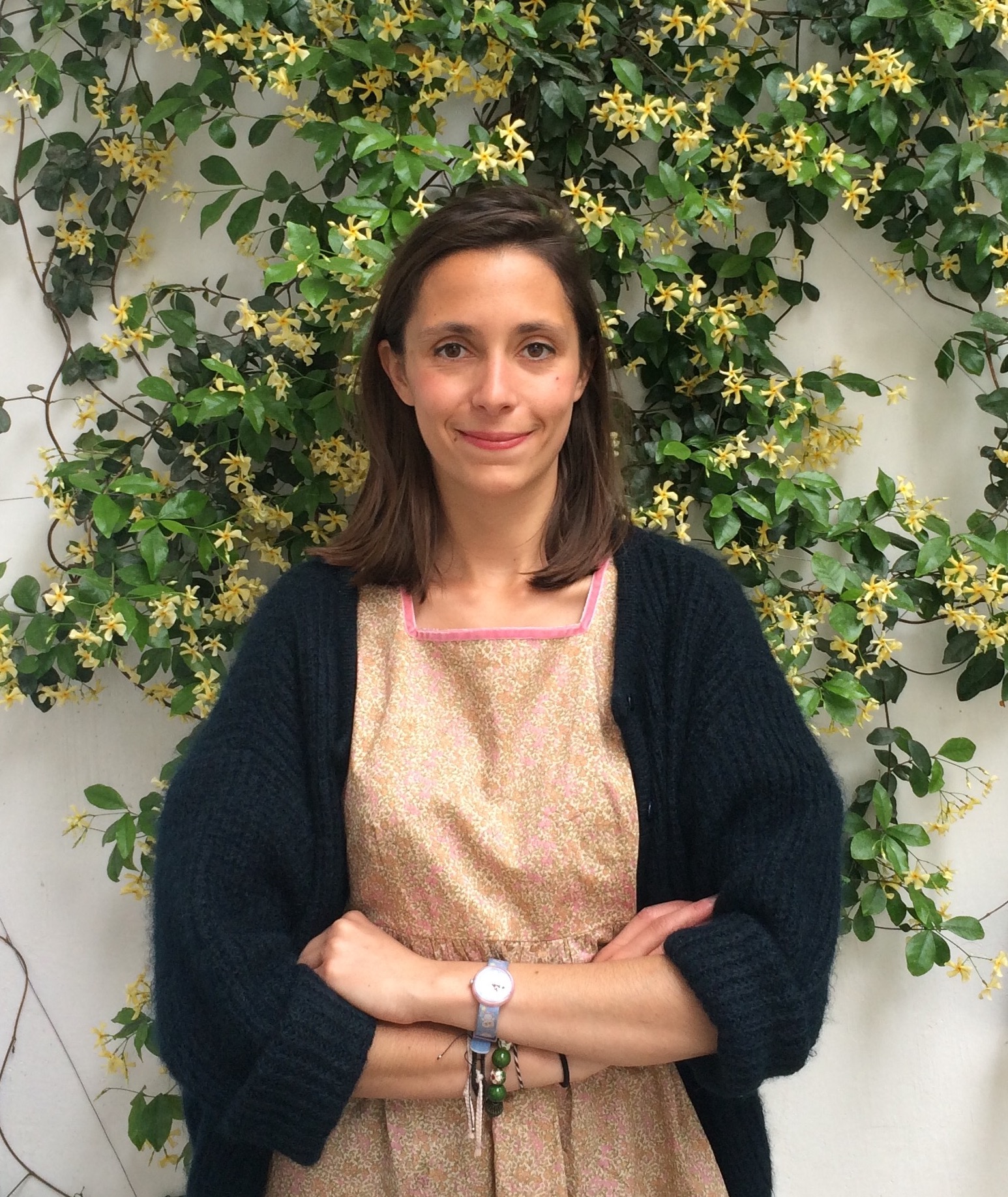 The Collaborative Coffee Source continues to grow with Charlotte Dourneau joining our business development team! Welcome Charlotte.
The Collaborative Coffee Source continues to grow with Charlotte Dourneau joining our business development team! Welcome Charlotte.
After studying business and law in HEC Paris and La Sorbonne, Charlotte worked in an impact investment fund in Paris. She met dozens of inspiring entrepreneurs who really motivated her to develop her own project. Passionate about coffee, she set off on a new adventure.
In 2016, she went to Peru and worked on coffee farms in pursuit of her dream to to bring together social entrepreneurship and coffee. She is co-founder of the blog Los Tostados which features great initiatives in coffee, sustainable agriculture and social impact. After returning from South America she joined Esperanza Café, a French company that sources and roasts organic coffee from small producers and she launched a roasting workshop and a coffee school in Barcelona with them.
Charlotte joins us as Business Development and Financial Officer at Collaborative Coffee Source and is based at CCS’ Oslo HQ.
Refrigerated Containers for Ethiopian Coffee
Innovation in Shipping
Our visit to Ethiopia a few weeks back was only my second time at origin. I expected to be inundated with information pertaining to all aspects of coffee production. After all, everything you are experiencing at that time and place is the precursor to the longevity and quality of the coffee, more so than during any other time in a coffee’s life cycle. If things are out of sorts at origin, the coffee is unlikely to express what it is capable of. It’s heavy stuff.
On top of this, I had just started a new position in Buying, QC & Sample Management at the Collaborative Coffee Source. That makes me the link between the producer’s hard work and the coffee community yearning for long lasting quality beans. My focus on this trip was to understand what is being done and what could be done better next time around. Altering fermentation times? Thinner layers on the drying bed? More selective picking? All seemed to be common suggestions that are given to producers and are absolutely key to improving quality and longevity! But perhaps the most interesting thing I learned during the trip was an innovation I’d never heard of: refrigerated containers.
Heleanna Georgalis of Moplaco Trading has been using these "reefer containers" for one customer for a few years now, and her customer speaks very highly of the results. Coming from George Howell Coffee, famous for pioneering the freezing of green coffee, I’m well aware of the positive and lasting effects that climate control provides. As you can imagine, I was excited and astonished to learn that refrigerated containers exist.
Moplaco Trading, Addis Ababa
Reefer Containers - How Do They Work?
Coffee harvested and processed in Ethiopia will make its way to the Port of Djibouti, located about 400km away on the shores of the Red Sea. There the coffees are transferred into a reefer container and stored at 18°C (64°F) and 60% humidity for the remainder of its (often) month-long journey across the ocean. Nitrogen, oxygen, carbon dioxide levels are also regularly checked to ensure proper storage.
The pallets are loaded in and arranged with air space between the coffee and the wall, while air is circulated throughout the container to prevent pockets. Refer to the graphic below (courtesy of www.cma-cgm.com):
How Much Does It Cost?
For the time being, only 40 foot containers are available to be refrigerated (the standard size is 20 foot). Why is this? Well, since 2000, the number of companies moving reefer container ships has dropped by 60%, so availability is very low. Companies who purchase reefer ships need twenty years to recover the initial cost, versus two years for a normal container ship.
But, there is hope. One company, Seatrade Reefer Containers, continues to purchase and use reefer containers in their fleet. Due to the slower delivery times of container ships over the last few years, shipments (from all goods industries) are getting to their destination well after their intended arrival dates. Late shipments have translated into more food spoilage. Seatrade hopes these delays in container delivery will cause an increased need for reefer containers, and a resulting increase in their availability. But for now, they are still a cost to consider carefully.
This means there are two options:
- Find a way to fill a 40 foot container. This either means purchasing large volumes, or sharing containers with other buyers.
- Move a container below maximum capacity. Of course, this is a more expensive option as the cost is spread out over a smaller volume.
Costs fluctuate, but the breakdown at the time of writing is this: if a normal 20 foot container costs around $900 to move from Ethiopia to your nearest port, the cost is 2.1 cents per pound. A max capacity 40 foot reefer container, over the same distance, would cost around $2,900, or 3.4 cents per pound. A 40 foot reefer container, filled to half capacity, then would then cost 6.8 cents per pound.
Does refrigerated shipping provide enough value to justify this additional expense? Could you make the money back by having your 88-point Ethiopian coffee hold up for two extra months? Being cost conscious is entirely necessary for a business to be sustainable so your budget may not lend itself to this kind of transit. However, for around ten dollars more per 60 kilo bag, it may be a wise investment not having to discard bad roasts of tired coffee.
Logistical Considerations
To arrange reefer containers for your coffee we'll need some advanced notice. As mentioned, containers are currently limited in quantity and require a bit extra planning. However we think it's worth the extra effort. For now we are offering reefer containers from Ethiopia and we hope to add more origins in the near future.
Please contact me if you have questions! I am excited by the potential of this shipping innovation and keen to discuss how reefer containers might work for you.
Matt
